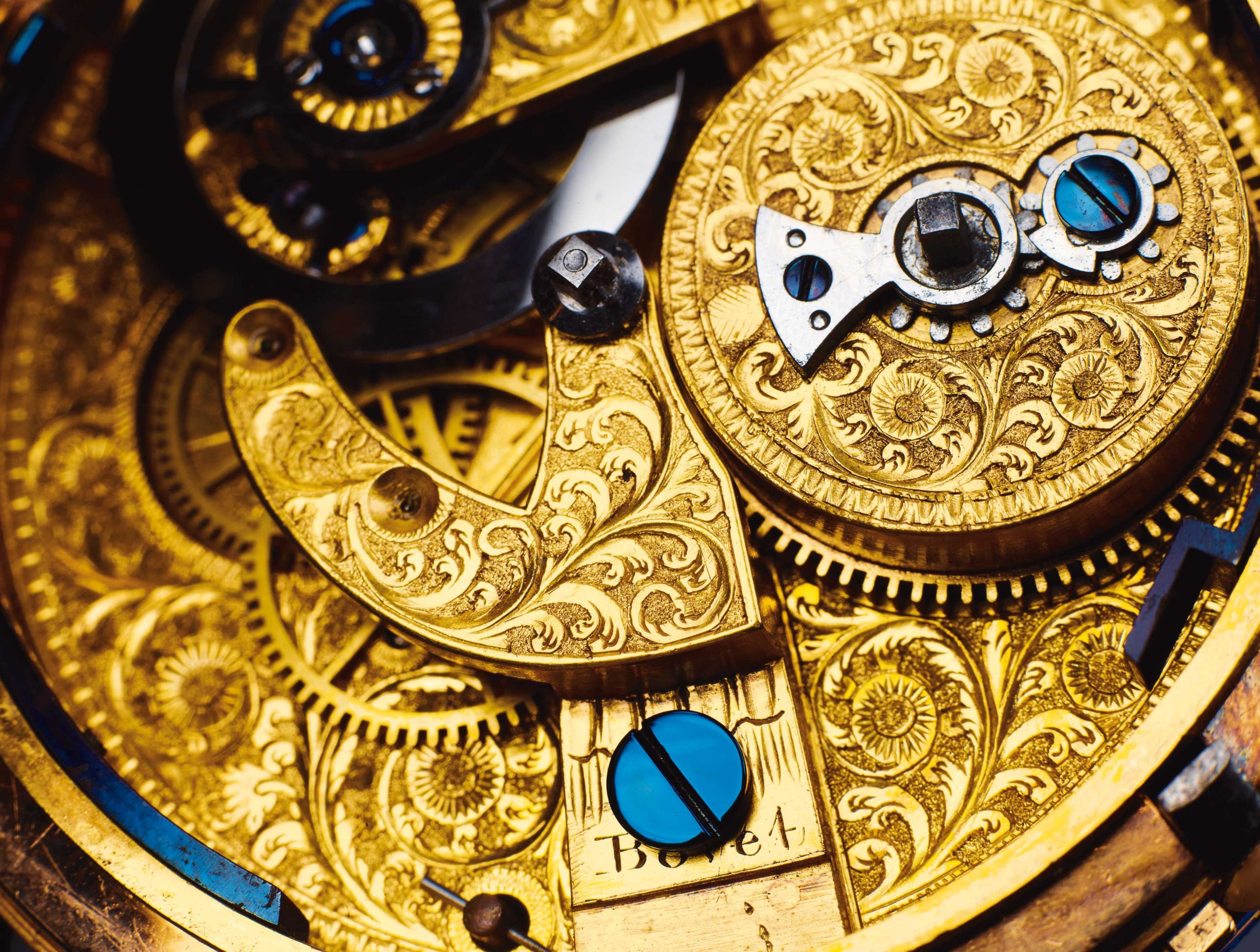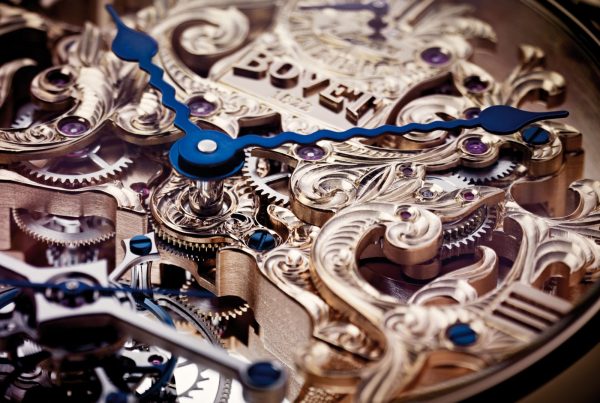BOVET timepieces are in museums all around the world, from the Forbidden City in Beijing, China, to the British Museum, the MOMA in New York City, and even in the Patek Philippe Museum in Geneva, Switzerland.
To celebrate the House’s bicentennial, BOVET 1822 has put together, for the first time anywhere in the world, a historical exhibit of timepieces spanning the entire 200 years.
Included in the exhibit are timepieces from the 1800s (timepieces specifically produced for the Chinese market, the Ottoman Empire, European royalty, and more), featuring cutting-edge, for the time, movements and decoration (engraving, appliques, enamel painting, pearl and gemstone settings, and more). The exhibition continues with timepieces from the early 1900s, including the timepiece that inspired the patented Amadeo system, and then moves to the famous BOVET chronographs from the 1940s and 1950s.
The closing section of the exhibit, inside the castle’s main building, which is part of Mr. Raffy’s residence, focuses on the timepieces produced during Mr. Raffy’s stewardship, from 2001 to the present. Included are the ground-breaking astronomical timepieces, the GPHG award-winning timepieces, the Pininfarina and Automobili Pininfarina collections, as well as the many high complications and horological marvels that BOVET has produced.
Also featured are the bespoke Rolls-Royce timepieces designed for the $26 million Boat Tail coach-built project.
“To celebrate 200 years, I wanted to exhibit as many of the key pieces that define BOVET’s history in one place for the very first time,” explains Mr. Raffy. “What the House of BOVET has done over its 200 years leaves me in awe, and inspired to continue the legacy of the Bovet brothers.”
Key Highlights
Mille Fleurs: Around 1830
Case: 18K yellow gold case; signed Bovet and numbered 2406; Bezel, bow and case-back set with pearls; Champlevé enamel case-back; translucent and plain enamel (extremely high quality), at least six colors; Every color goes into oven at high temperature (800 degrees)
Diameter: 56.90mm
Thickness (case-back and glass): 18.80mm
Movement: Winding and time setting by key; Winding limitation by Chinese stopwork; Jacot Duplex escapement; Bridges and plates engraved with floral designs with appliques (copper; silver; and gold); Hour; minute; and seconds indication at the center of the dial.
Diameter: 48mm/21¼ lines
Dial: White enamel on copper plate. Black roman numerals. Blued steel hour, minute, and seconds hands.
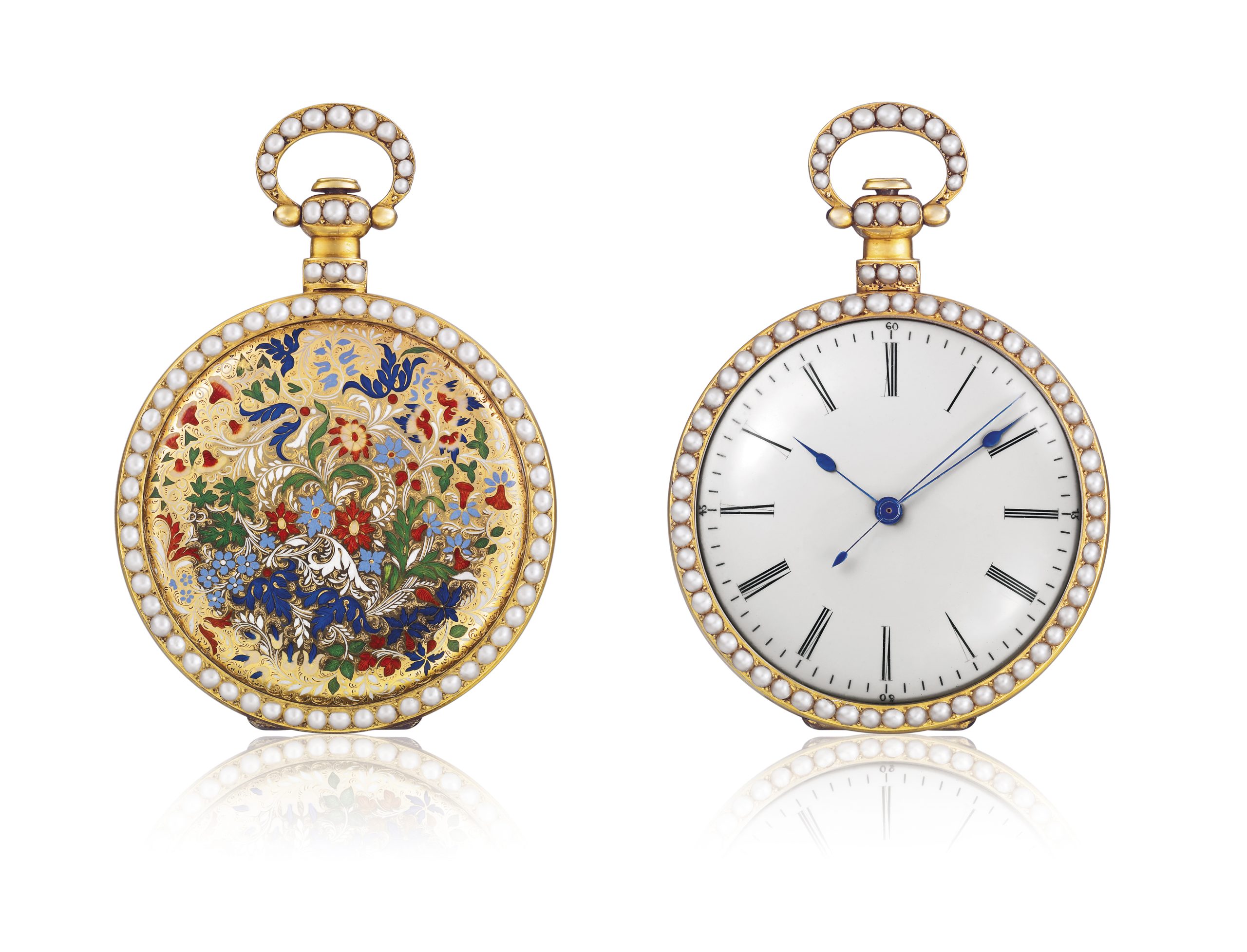
Click on the image to try the Loupe.
Madonna and Child: Around 1850
Case: 18K yellow gold case numbered 1529 ascribed to Bovet; Translucent flinque (guilloche with enamel on top) enamel and guilloché case-back; Case front, bezel front and back are champlevé enamel
Diameter: 62.85mm
Thickness (case-back and glass): 24mm
Movement: Winding and time setting by key; Winding limitation by Chinese-style stopwork; Duplex escapement; Bridges and plates engraved with flower decorations; Hour; minute; and seconds indication at the center of the dial; Champlevé enamel on the bow; which has the push piece to open the case back; Fire-blued steel screws; jewels; Balance wheel with blue masselote for adjustment
Diameter: 53mm/23½ lines
Dial: White enamel on copper plate; Black roman numerals; Fire-blued steel hands
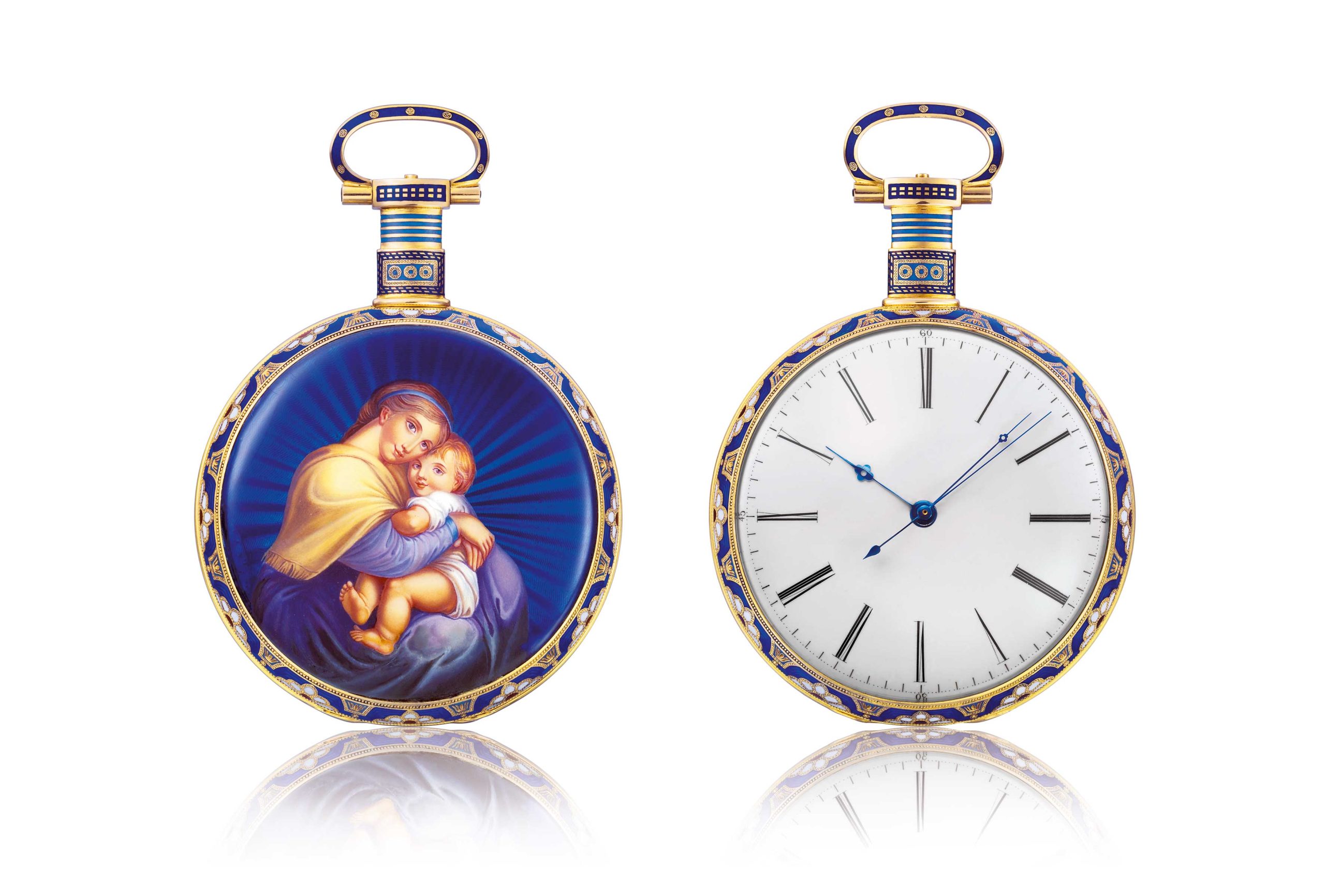
Click on the image to try the Loupe.
Chinese Zodiac: 1850
Case: Steel case signed BOVET in Chinese; Chinese stamp on the case-back; Case-back bezel engraved with circular decorations and dots
Diameter: 56mm
Thickness (case-back and glass): 20mm
Number: 946
Movement: Signed BOVET FLEURIER and numbered 504; Winding and time setting by key; Winding limitation Chinese stopwork; Duplex escapement; Steel; 5 arm balance ring; Golden brass bridges and plates engraved with Fleurisanne decoration
Diameter: 47mm/21 lines
Dial: White enamel on copper plate; Black Roman numerals 24 hours indication; Outer Chinese hour track, inner Roman Numeral track; 12 Chinese zodiac animals in colored
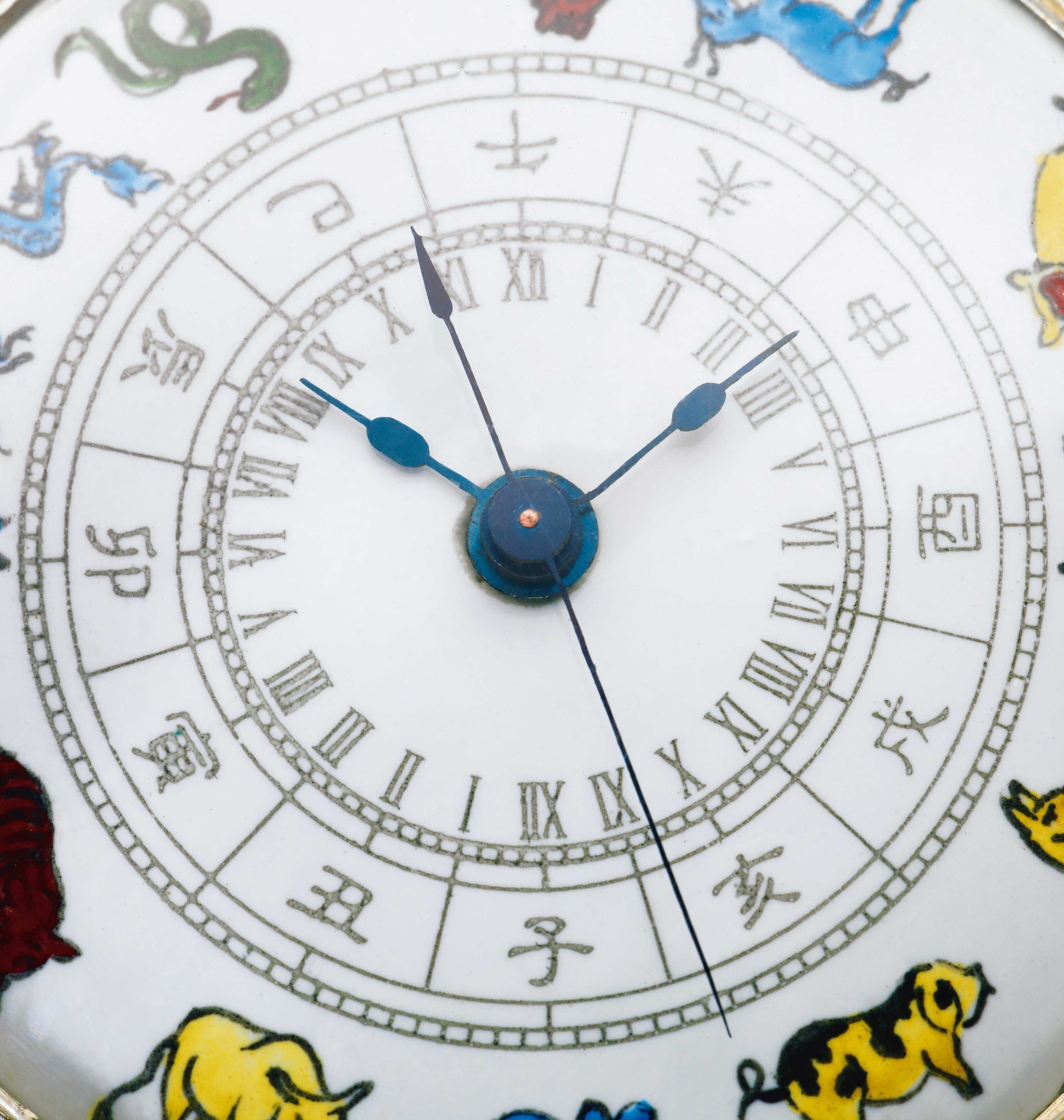
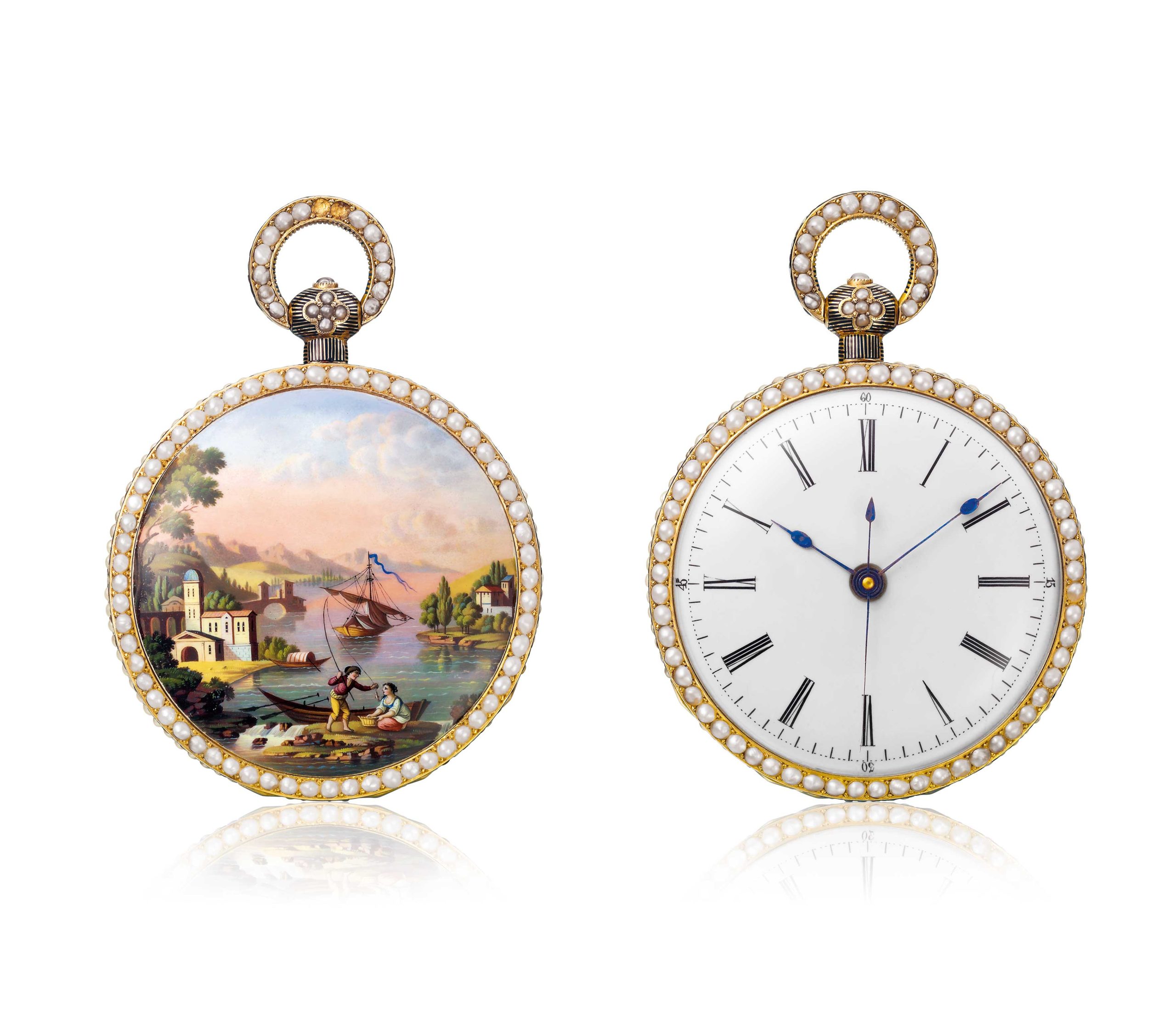
Click on the image to try the Loupe.
Lake Leman Landscape: Around 1830
Case: 18K gold case; signed Bovet Fleurier and numbered 286; Bezel, bow and case-back set with pearls; Grand Feu enamel case-back with enamel miniature painting; Richter style; Black stripes in champlevé enamel on the bow
Diameter: 56.90mm
Thickness (case-back and glass): 18.80mm
Movement: Winding and time setting by key; Winding limitation by Chinese stopwork; Duplex escapement; Bridges and plates engraved with floral designs; Hour, minute, and seconds indication at the center of the dial; Openwork center bridge
Diameter: 48mm/21¼ lines
Dial: White enamel on copper plate. Black roman numerals. Fire-blued steel hour, minute, and seconds hands
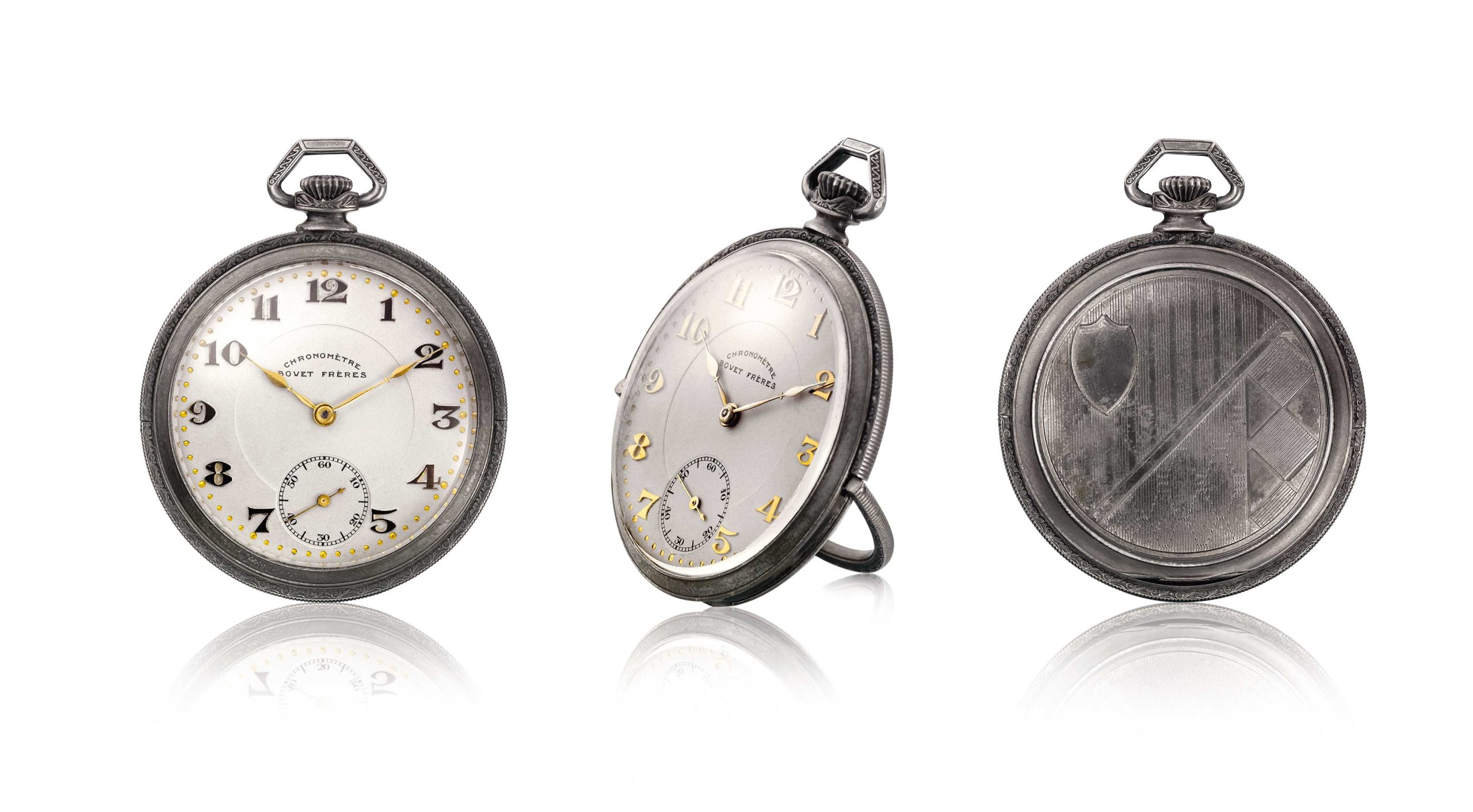
Click on the image to try the Loupe.
Easel Chronometer – 1930 (inspiration for the Amadeo system and the 19Thirty)
Case: Silver case, signed Bovet and numbered 90013; Patented “easel” system (chevalet) (Swiss patent N° 148535 dating from October 1, 1931)
Diameter: 46mm
Thickness (case-back and glass): 11.20mm
Caseback with guilloche decoration
Movement: Swiss anchor escapement; Rhodium; Côtes de Genève finishing, Hour and Minute indication at the center and seconds at 6 o’clock; Balance spring with terminal curve
Diameter: 37mm, 16½ lines
Dial: Silvery with golden applied Arabic numerals; Yellow gold hands; Seconds subdial in Arabic
Showcasing Two Centuries of Innovation
Founded in 1822 in Fleurier, BOVET is one of the few watchmaking houses still located within a stone’s throw of where it was established. Headquartered in the 14th century Castle of Môtiers, which overlooks Fleurier, BOVET is committed to continuing the legacy of its founders — combining traditional, impeccably finished and decorated high watchmaking with cutting-edge innovation.
Over its 200 years, BOVET has been a key innovator when it comes to the decorative arts and mechanical watchmaking. In addition to first-ever exhibition back, BOVET pioneered key finishings, including Fleurisanne hand-engraving, which the House continues to feature today. In addition, BOVET is famous for a very special flyback chronograph from the late 1900s, which is still taught in watchmaking schools around the world today.
Since Mr. Raffy took the helm, the innovation has continued. One of the best-known breakthroughs is the patented Amadeo case system in 2010, which allows the BOVET timepiece to convert from the wrist to a pocket watch and a table clock (and necklace), while at the same time allowing the timepiece to be worn on either side.
BOVET also won the Aguille d’Or, watchmaking’s highest prize, in 2018 for the Recital 22 Grand Recital, and followed that up with more prizes from the GPHG in 2020. BOVET has won more than 40 awards in the last 21 years, and has registered more than 20 patents, all contributing significantly to the advancement of haute horlogerie.
2022 is the year to celebrate BOVET’s history of Timeless Art and Engineering Brilliance.


